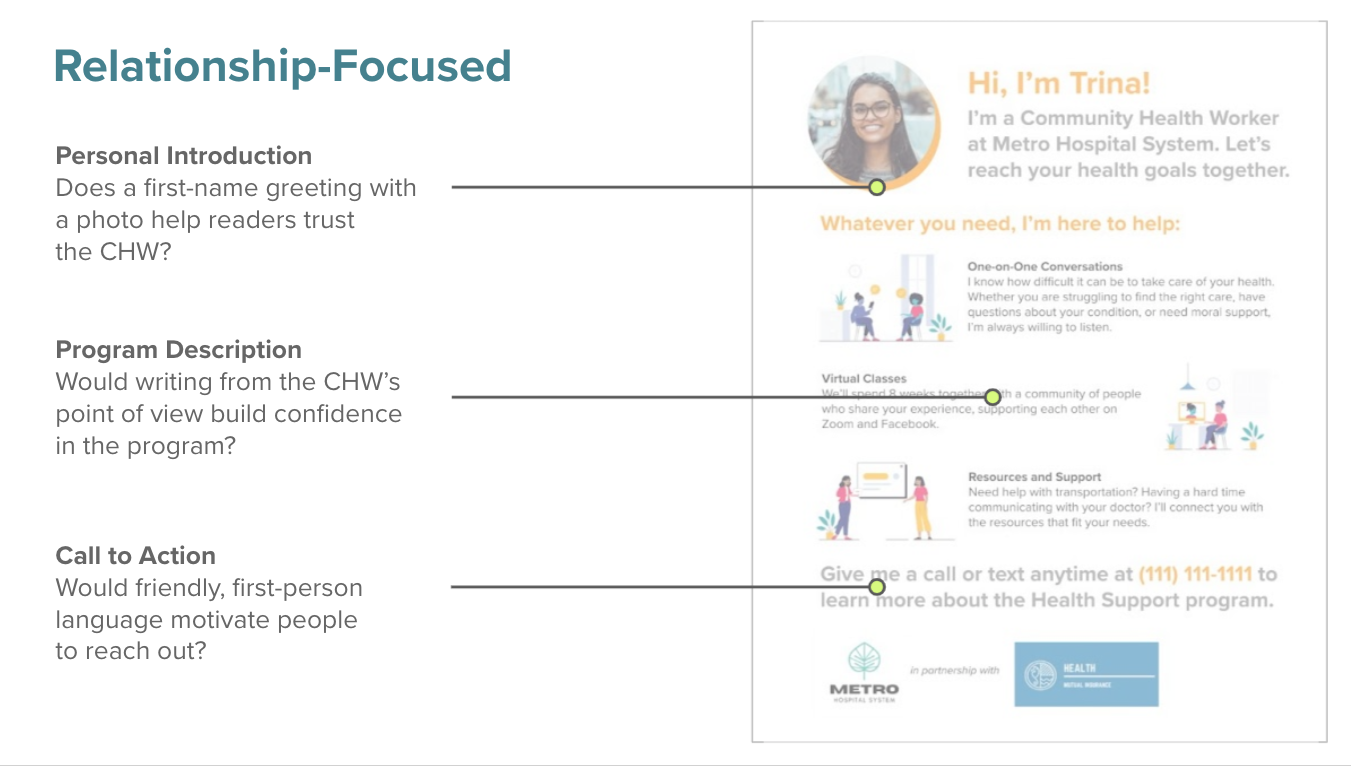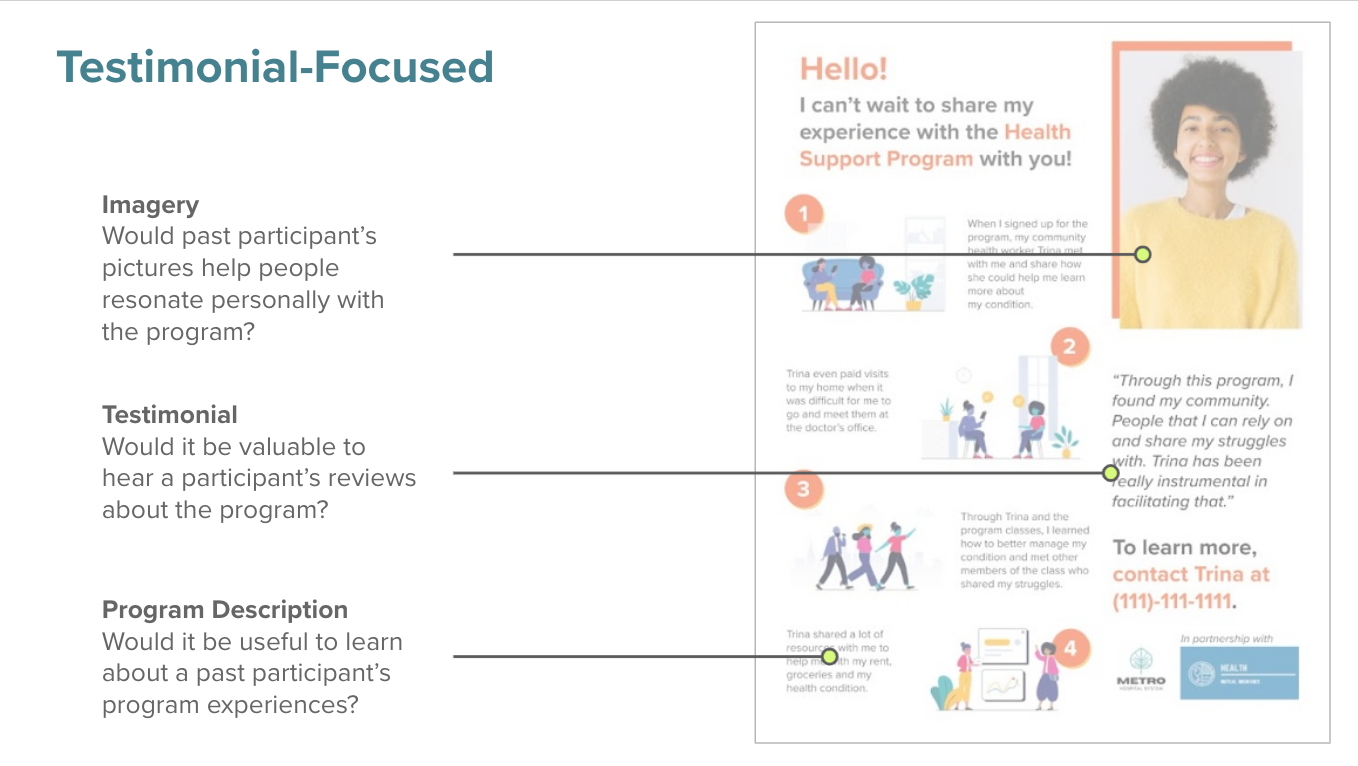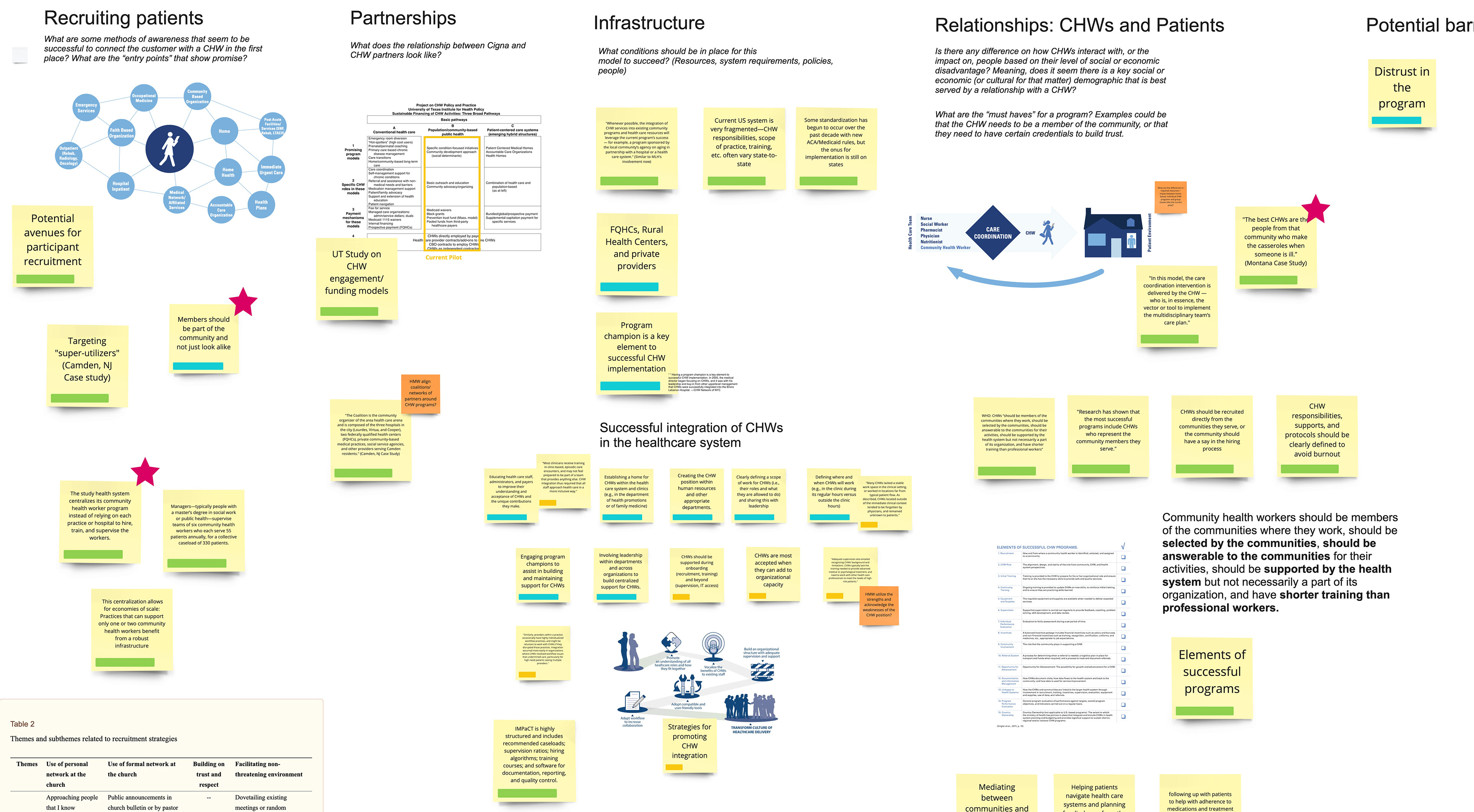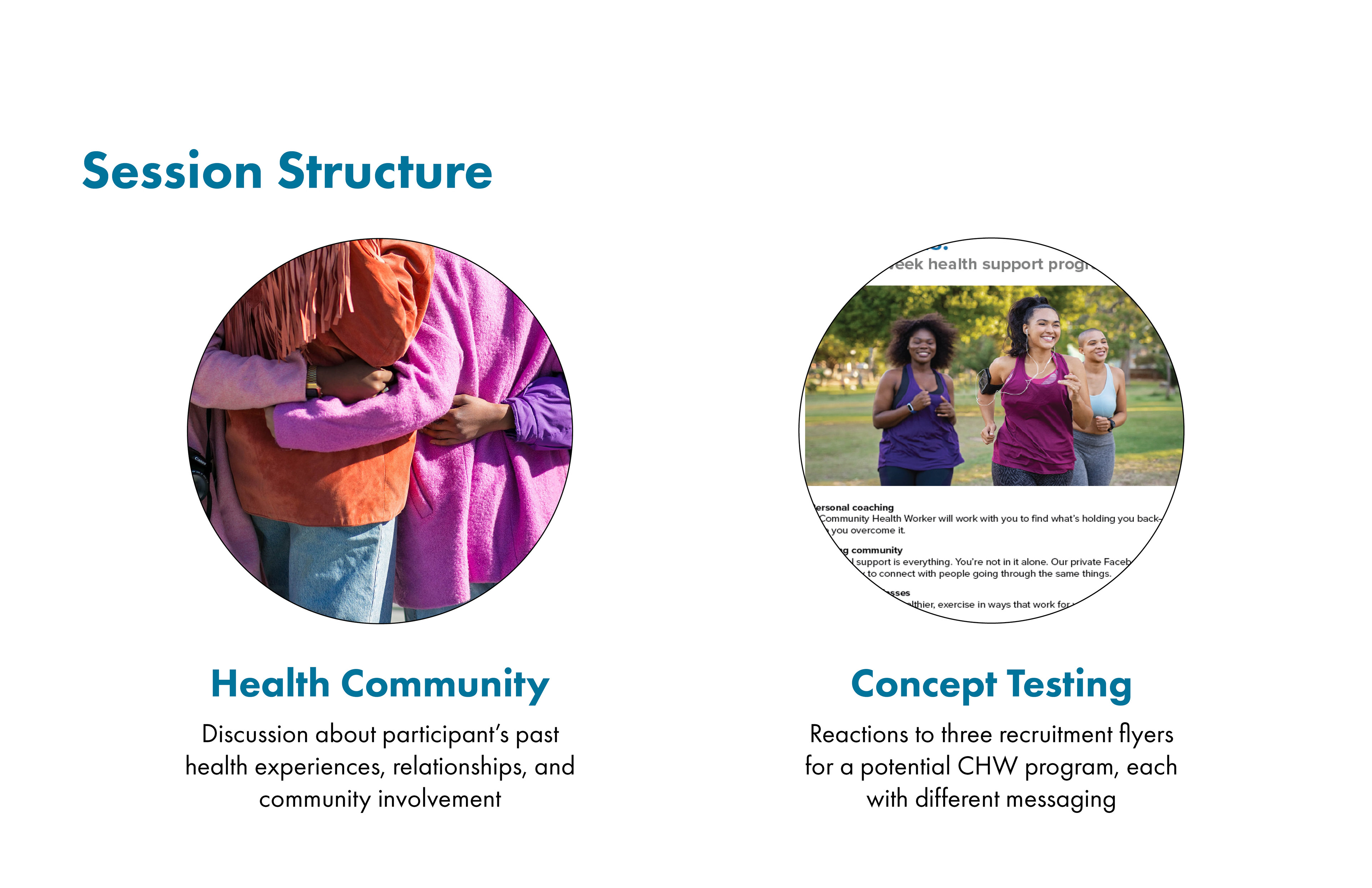🤝 Community Health Research
2021 • How can we connect people with supportive health programs?
Project Overview
| Client | Project Format | Team |
|---|---|---|
 |
Part-Time Remote Contract | CHW Program Leader, 2 UX Researchers (including me) |
Business Problem
Community Health Workers (CHWs) serve as liaisons between low-income patients and healthcare systems, working to improve access to preventative care and bolster clinical outcomes.
Cigna’s past Community Health Worker pilot programs had incredible clinical results, but participants were sourced through recruitment agencies. Working on a team of two, I explored strategies for effective, organic community outreach to support future pilot programs.
My Role
As a UX Researcher, I...
- Collaborated with fellow researcher on study and analysis design
- Participated in all sessions (half moderation, half note-taking)
Approach
Research Objectives
Key Questions
- What models currently exist for CHW programs? What specific qualities make a program successful?
- What value do patients see in CHW programs? How, where, and when can we communicate this value most effectively?
Research Activities
Process
Desk Research
| Method | Output |
|---|---|
| Literature review | Recommendations for Cigna program structure based on existing CHW programs |
Before crafting outreach strategies for Cigna's program, the team needed to understand existing CHW models. At the start of the project, we collected quotes from academic and professional literature and affinitized them in Miro.
User Interviews
| Method | Sample | Output |
|---|---|---|
| 60-Minute user interviews via dscout | 3 CHWs + 5 patients in Cigna's program audience | Insights to inform program recruitment |
We also conducted interviews with 3 CHWs to understand their day-to-day work and relationships with patients (discussion guide). Through this process, we started to understand the qualities that make CHWs so unique:
Preliminary Findings
- Narrative-Centered Care: CHWs are successful because they focus on health narratives and meet people where they are.
- Personal Relationships: The CHWs we interviewed said it best: “Add me to the list of people you can call, because I’m part of your support network now.”
Based on this knowledge of existing programs and CHW relationships, I worked with the team to create 3 messaging mock-ups for future Cigna pilots.

The 3 messaging mockups tested

Mockup testing whether describing the CHW relationship communicated value

Mockup testing whether conveying other participants' experiences communicated value
We tested these prototypes through hour-long sessions with 5 users (discussion guide). In each interview, we discussed participants' past experiences with health programs as well as their reactions to the 3 mock-ups.
Thematic Analysis
We then affinitized our research data into 5 key learnings, using portions of both the 5 E's and Jobs to be Done frameworks to organize our findings.
Findings Presentation
Using these insights, we developed a research report to present to Cigna stakeholders.
Outcomes
Impact
Following our research presentation...
- Cigna successfully recruited their next pilot cohort by reaching participants through their primary care providers—someone they already had a long-term, trusting relationship with.
- CHW programs have continued to gain visibility within Cigna as an emerging method with great clinical potential.
Learnings
Through my experience on this project, I learned...
- The power of combining lenses: Using multiple different frameworks during synthesis allowed us to see the same data from multiple angles, making sure our insights spanned the user's journey and priorities.



